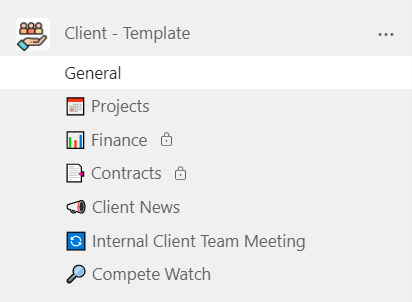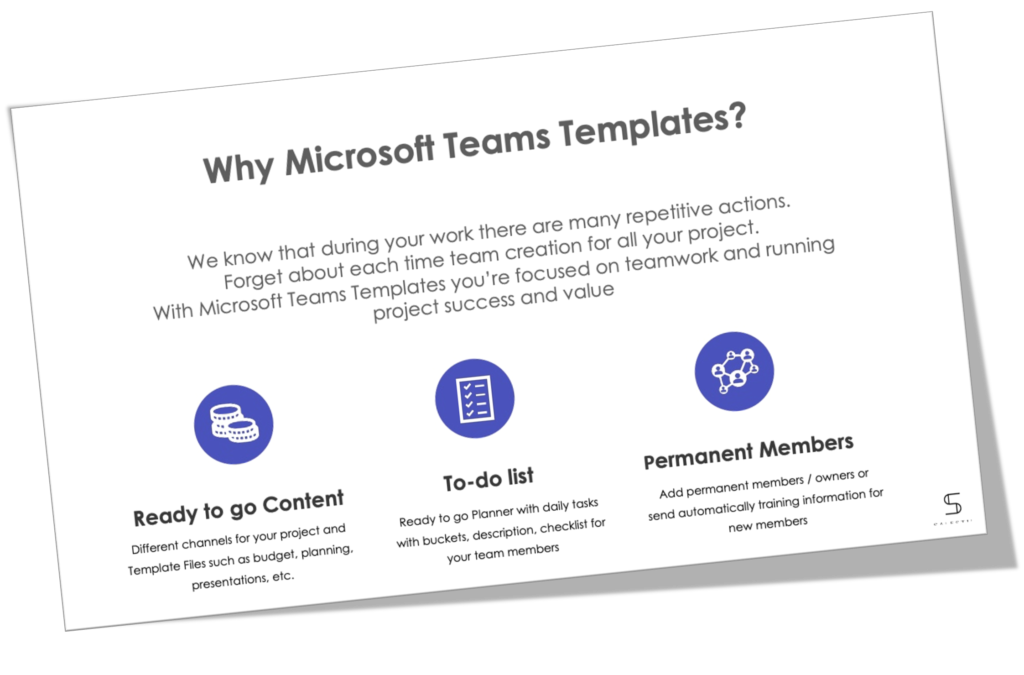Collaboration solutions have become a critical need for organizations in the financial industry. Every financial entity needs a unified knowledge hub and a centralized processing and communication system for all its activities.
Today’s technology has provided proper solutions to digitize many processes in any business. However, collaboration solutions have taken this digitization to the next level. They offer business-focused services that save resources and help achieve operational excellence.
Previously we have talked about the effect of collaboration solutions on the legal industry. This article will talk about what collaboration looks like in the financial industry. We will also discuss how technological solutions can help improve collaboration.
From accountants to financial corporations
The nature of the financial industry forces a high level of collaboration with all stakeholders involved. Furthermore, financial processes in any corporation always connect with multiple internal departments and external service providers from different professions. Thus, collaboration here is a need, not just an advantage.
A single accountant responsible for bookkeeping the financial information in a small company needs to collaborate with different employees. They also need to work with banks, insurance companies, auditors, and others. For instance, processing the monthly payroll requires communicating with the executive manager and HR specialist about extra hours, bonuses, deductions, loan repayments, and payable taxes and reaching out to the bank for payment orders and lay-off requests that might be affecting bank loans and mortgages. If this was just a single accountant, how much would a financial corporation rely on collaboration with unlimited daily processes of payments, installments, funding, disputes, and other financial requests? The interaction is far beyond any other industry, and only an efficient collaboration solution can keep everything in one place.
So, how do you keep up with such a dynamic workflow? How do you structure your daily work and collaborate with all these different stakeholders? At the end of the day, finance professionals work with people and documents. Having both in one place saves accountants a lot of time and energy.
Who do financial teams collaborate with?
A finance specialist has to communicate with other professionals in the same department, other departments in the same company, and other companies working with it. These intersections are essential for their work, and it ultimately fosters a high level of collaboration between all these parties.
Let’s break this collaboration down and understand how technology can be leveraged to maximize efficiency.
Collaboration between colleagues
Inside financial departments, there are always multiple financial specialists from different areas. For example, payroll, income, taxation, costing, development, auditing, etc. The need for these majors differs from one business to another based on size and the nature of its work.
To better facilitate this collaboration, you can have everyone in a single shared collaborative workplace such as a team in Microsoft Teams. It’s a secure virtual workspace, where representatives of finance and all the other departments can share documents, information, and work collaboratively towards a single goal.
Collaborative workspace in action

Let’s see what this collaborative workspace in the financial industry looks like in a real-life scenario. Suppose a payroll accountant in a retail company was asked to review the salary system and evaluate the possibility of increasing the salaries of sales employees by 5% at the end of the year. The payroll accountant can’t just make the decision without reviewing lots of information and consulting other professionals about their opinion. Here is a simple breakdown of what collaboration tools can make possible:
- Ask the profit and loss accountant to share relevant information about the financial status of the last five years.
- Discuss taxes and regulations with the taxation accountant about salary that might serve the case to lower the taxes as much as possible.
- Ask the sales bookkeeper to share the financial tables of sales points for the last five years.
- Request any essential financial document to be shared within the channel privately or with the group of accountants.
- Create an initial proposal, share it with other accountants to review from their prescriptive, and add suggestions/edits based on their recommendations.
- Hold meetings with other accountants to discuss the proposal and its edits.
- Request the advisory of an external accountant who doesn’t work in the same company about some issues and share only relevant non-sensitive data.
- Create a new payroll table, share it with other accountants, have them confirm their approval by digitally signing the document, then share it with management.
Perks of using a collaborative workspace

Using a collaborative workspace allowed accountants to:
- securely share their sensitive financial tables,
- apply for access permissions with an edit control,
- review proposals with real-time editing,
- hold online meetings to discuss potential change,
- digitally sign and confirm their approval, and
- keep track of everything on a professional level.
This process saved their time and company resources, and instead of having to send back and forth emails and waste each other’s time, they efficiently organized the entire process.
Taking it a step further
It’s clear that using a collaborative workspace spared all parties involved a lot of hassle. But we can take it a step further and integrate pre-built collaboration workspaces. You will only need to create your workspace once (a template workspace) and then use it for as many different cases as needed. With a pre-built collaboration workspace, you can engage all key actors right away. For instance, if your organization has an internal audit department that is involved in all cases related to finances that your firm (or department) manages, you can add a representative from this department to your template workspace and she’ll automatically be added to all the other ones that you create.
Pre-built collaboration workspaces also allow you to develop a structure and apply it to the rest of the workspaces. You can create designated spaces within your template for more focused discussions. For instance,
- Monthly budgeting,
- Quarterly reports,
- Tax updates,
- Financial requests, etc.
If you employ a template solution like SalesTim, you can create a similar workspace just once and then duplicate it for the rest of your projects and/or clients.
Collaboration with clients
People are always sensitive about their financial information, and they tend to feel insecure about sharing it by all means. On the other hand, financial advisors have to check all financial documents before they give their advice or provide their services. Collaboration workspaces provide the bridge between clients and financial service providers by offering private channels of communication and sharing.
To better understand the advantages of collaborative workspaces, take a look at this example. A mobile telecom service provider requested a formal audit of its annual financial statements before being announced to the public. An accredited financial auditing company was hired for the job, and here is a simple breakdown of what collaboration tools can make possible:
- The auditing company can request to share the financial statement with particular auditors assigned to do the work.
- The auditors can schedule multiple online meetings with the client’s financial department.
- The auditors can review the files, add notes, discuss each question privately and quickly with the client’s financial professionals.
- Auditors can get signed approval to access banking information, then ask the bank to act accordingly and share relevant proof of funds.
- Auditors can form their final statement and share it with the client for confirmation.
The client could have been in a different city than the auditing company, and so does the bank. Still, the collaboration workspace provided a secure communication channel between all parties.
Working with multiple clients
If you’re a financial company that provides services and has many clients in your portfolio then a pre-built workspace will save you time and structure your work on each account.

Suppose you have a number of NGOs whose accounting is outsourced to you. For all similar clients/projects, you create just one template collaboration workspace that will have all sections dedicated to separate discussion topics:
- Projects
- Finance
- Contracts
- Client News
- Internal Client Teams Meetings
- Compete Watch
You can also upload guidelines, contract examples, files templates, financial reports and other documentation at the template level. So, when a new client comes that falls in that category, you simply replicate the template and do some minor customization if needed.
Collaboration with other departments
Financial departments in any company are the center of communication, and everyone needs to get their approval before taking significant action in other departments. For example, the sales department needs financial permission to offer a discount, the marketing department needs financial support on proposed expenses, the HR department needs financial approval to hire new people beyond the annual plan, and even the senior management keeps open and continuous communication with the financial department to keep an eye on the company’s status.
These requests can be made via an endless number of emails and phone calls or organized via a collaboration solution. All conversations and files can be recorded and saved for future reference. The idea of establishing everything is beneficial because it eliminates false accusations at any point in the future and gives the financial department the ability to revisit their records.
Leveraging a template solution
Every department within the company might have their working style. As the financial department, which may deal with hundreds of different documents and queries on a daily basis, you may want to pose your own requirements. Create a collaboration workspace template with Collaboration Templates and invite the rest of the departments. While creating the template, you can set a number of automated rules such as:
Each of these features is designed to enforce uniformity and make sure that your colleagues have no other choice but to follow your guidelines, so that you can do your job instead of having to “decode” the queries. Your admin and IT departments will absolutely love these features, as they significantly reduce their workload.

Wondering how to templatize your business processes?
Download our step-by-step guide on how to create Collaboration Templates for Microsoft Teams
By implementing collaboration solutions, organizations in the financial industry can leverage the use of technology to increase their productivity and achieve client satisfaction with fast, secure, and documented communication. Eventually using these solutions will become essential, and no entity will be able to survive in today’s changing business world without efficiently collaborating with others.
